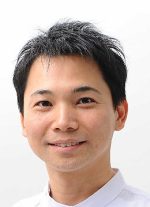Symposium title
Practical Session of Japanese Acupuncture: Japanese acupuncture for respiratory diseases (mainly COPD)
Scheduled
Day 2, 9:00 / Day 2, 14:45
Presentation summary
Introduction :
This practice introduces the Japanese method of tube acupuncture for dyspnoea seen during respiratory illnesses. The technique of tube acupuncture was invented by Waichi-Sugiyama approximately four centuries ago and is the most common acupuncture technique in Japan.
Method :
The methodology employed in this study involved the utilisation of a tube acupuncture technique, a method that has been proven to be effective in the insertion of small-diameter needles into living subjects. This technique involves the use of a guide tube, which serves as a conduit for the insertion of the needles. The application of specific manipulations following the insertion of acupuncture needles can yield a range of effects.
Specifically, the treatment of muscle tension is achieved through the application of acupuncture needles thatare oscillated and rotated.
Result :
The results of the study indicate that the implementation of tube acupuncture for the treatment of COPD can result in the restoration of respiratory muscle strength and the improvement of dyspnoea.
Conclusion :
In conclusion, the present study has demonstrated that Japanese tube acupuncture can improve dyspnoea in COPD patients without causing pain at the time of insertion.
This practical session is given in “Session 3 : Hands-on Workshop, Japanese Acupuncture”.
Conflict of interest
No

masuzuki@fmu.ac.jp
Professor and Chair, Department of Acupuncture and Kampo surgery, Kampo Research Institute, Aizu Medical Center, Fukushima Medical University. Fukushima, Japan.